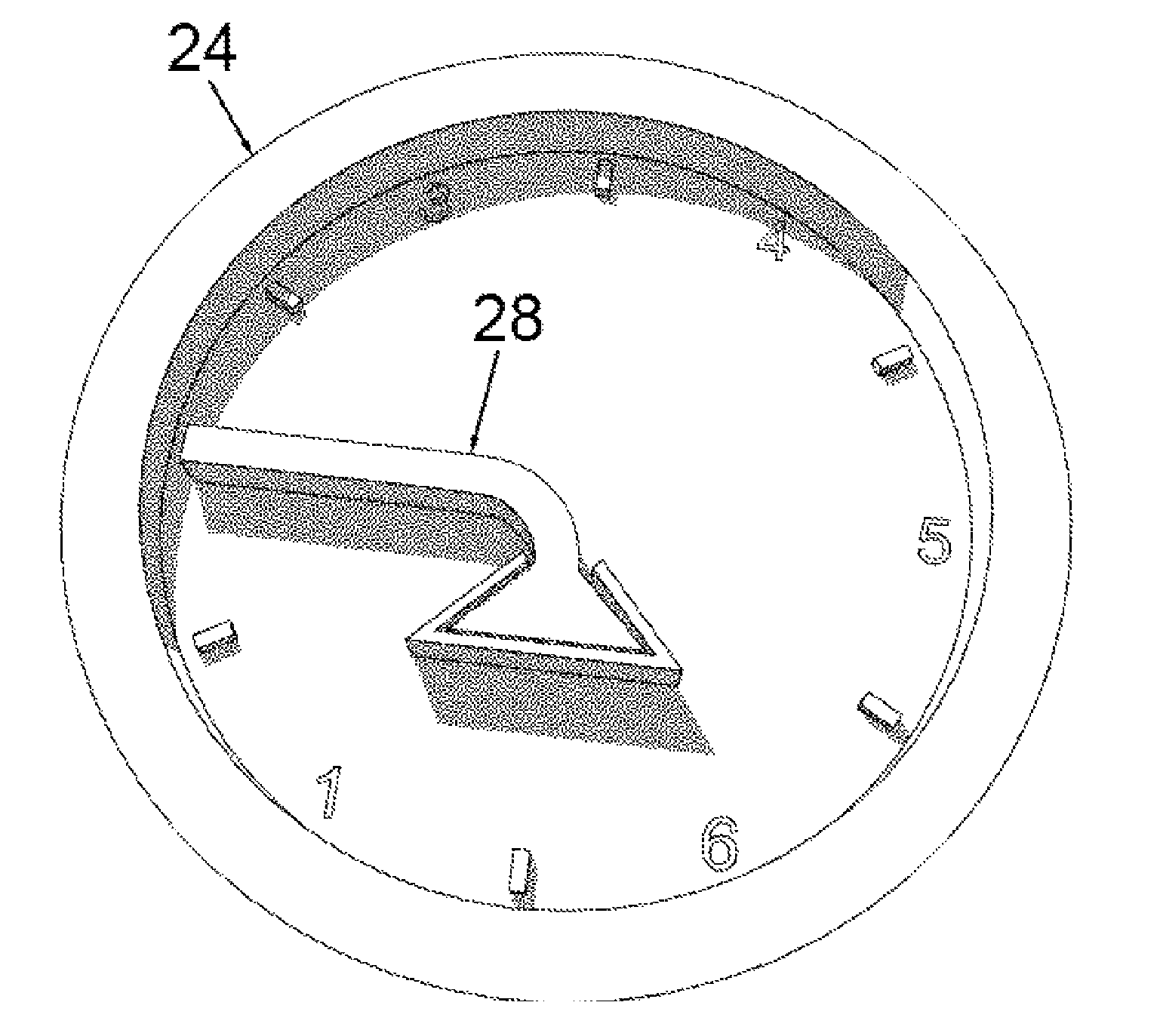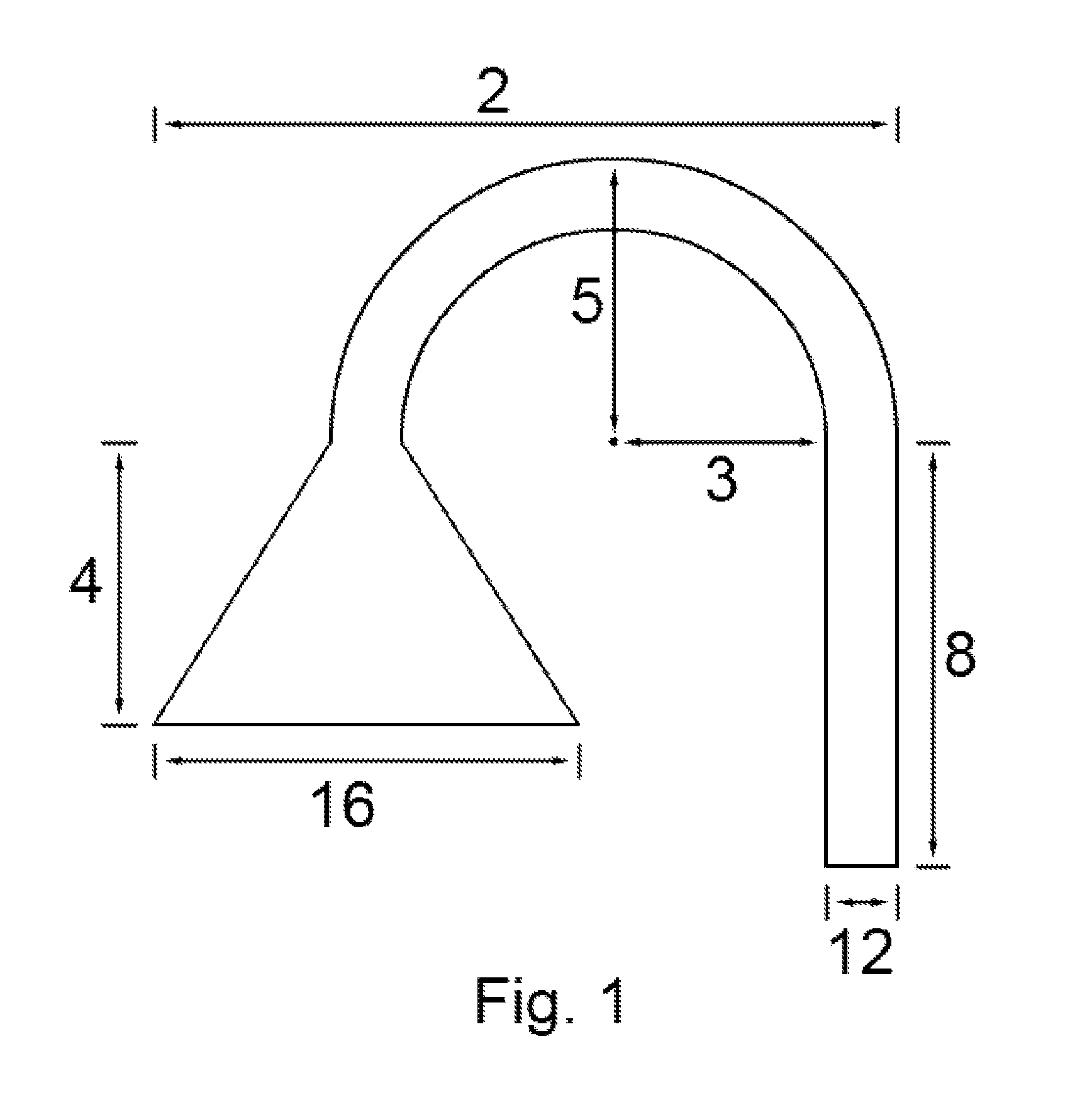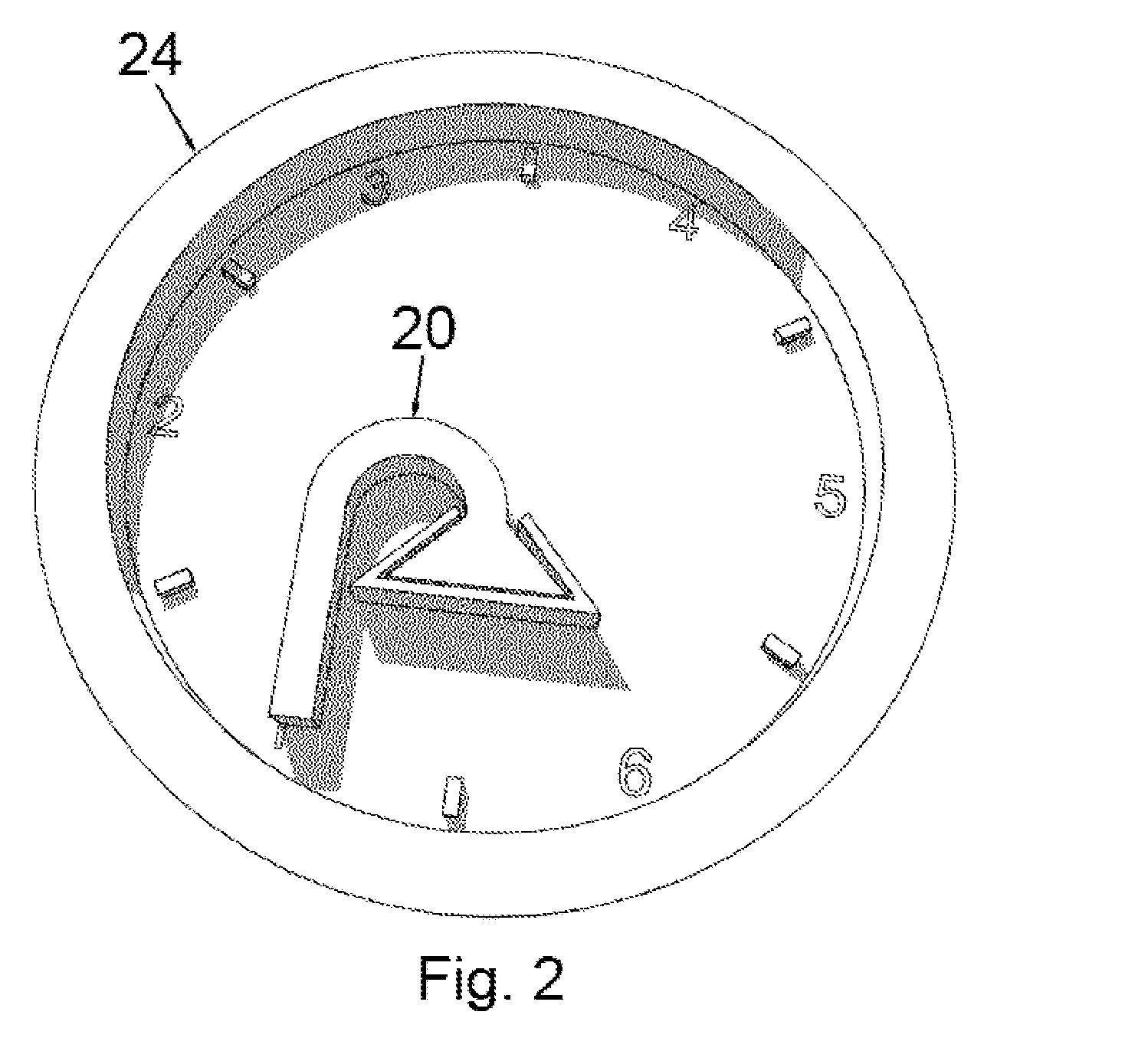Environmental condition cumulative tracking integration sensor using shape memory polymer
a technology of cumulative tracking and environmental conditions, applied in the direction of instruments, heat measurement, analysis using chemical indicators, etc., can solve the problems of unfavorable use or consumption, lethal levels of botulinum toxins, product spoilage, etc., and achieve the effect of unfit for use or consumption
- Summary
- Abstract
- Description
- Claims
- Application Information
AI Technical Summary
Benefits of technology
Problems solved by technology
Method used
Image
Examples
example 2
Epoxy Based Shape Memory Polymer Tag
[0077]A polymeric reaction mixture was formulated by mixing bisphenol-A-diglycidyl ether (78.46%), 4,4′ methylenedianiline (0.90%), and aniline (20.65%) where all percentages are by weight. The Bisphenol-A-diglycidyl ether is kept in a heated drum so it remains a liquid. If it crystallizes, melting it will have no ill effects on the resin. The 4,4′ methylenedianiline comes in solid pellets and was weighed out and added to the Aniline. The Aniline / 4,4′ methylenedianiline was sonicated in the ultra sonicator until the 4,4′ methylenedianiline was completely dissolved in the aniline. The Aniline / 4,4′ methylenedianiline mixture was added to the Bisphenol-A-diglycidyl ether, using a transfer pipette. The resin was then mixed until the resin was homogenous. The resin is then transferred to a glass / viton mold by pouring, injecting or pumping the resin into the mold. The mold is generally 2 glass plates, coated with WOLO mold release, and held together wit...
example 3
Acrylate Based Shape Memory Polymer Tag
[0078]A polymeric reaction mixture was formulated by mixing 1.0% 1,6-hexanediol diacrylate, 48% methyl methacrylate, 50% butyl acrylate, and 1.0% percent benzoyl peroxide to achieve a homogenous mixture, all percentages are by weight. Enough reagents to make 160 grams of resin were mixed together in the order listed above. The resin was injected into a mold. The mold was composed of two glass plates, coated in WOLO mold release and a Teflon o-ring. Ten clamps held the mold together. Disposable syringes and needles were used to inject the liquid resin into the mold. The resin was cured at 65 degrees Celsius for two hours, then at 80 degrees Celsius for 22 hours. The designs noted in FIG. 1 are then laser cut from the sheets to form the sensors.
[0079]Water Vapor Pressure Monitoring
[0080]In an additional embodiment, moisture-sensitive shape memory polyurethanes can be obtained by employing diol-terminated poly(caprolactone) (PCL diol), hexamethyle...
example 4
[0097]A formulation was made with 98.5 weight percent 4-vinyl pyridine, 0.5 weight percent AIBN (initiator), and 1.0 weight percent divinyl benzene. Enough reagents to make 10 grams of resin were mixed together in the order listed above. The resin was injected into a mold. The mold was composed of two glass plates (coated in WOLO mold release) and a Viton o-ring. Four clamps held the mold together. Disposable syringes and needles were used to inject the liquid resin into the mold. The resin was cured at 60 degrees Celsius overnight (>16 hours). The sample was removed from the mold, and tested with DSC to confirm full cure. The Tg of the dry sample was approx. 125° C., as shown by DMA data. Part of the sample was removed, and allowed to soak in water until it was fully saturated. The Tg of the wet sample was approx. 20° C., also shown by DMA data. Water lowered the Tg of this sample of water activated SMP by more than 100° C.
[0098]Additionally, because both the moisture and temperatu...
PUM
| Property | Measurement | Unit |
|---|---|---|
| temperature | aaaaa | aaaaa |
| temperature | aaaaa | aaaaa |
| temperature | aaaaa | aaaaa |
Abstract
Description
Claims
Application Information
 Login to View More
Login to View More - R&D
- Intellectual Property
- Life Sciences
- Materials
- Tech Scout
- Unparalleled Data Quality
- Higher Quality Content
- 60% Fewer Hallucinations
Browse by: Latest US Patents, China's latest patents, Technical Efficacy Thesaurus, Application Domain, Technology Topic, Popular Technical Reports.
© 2025 PatSnap. All rights reserved.Legal|Privacy policy|Modern Slavery Act Transparency Statement|Sitemap|About US| Contact US: help@patsnap.com



